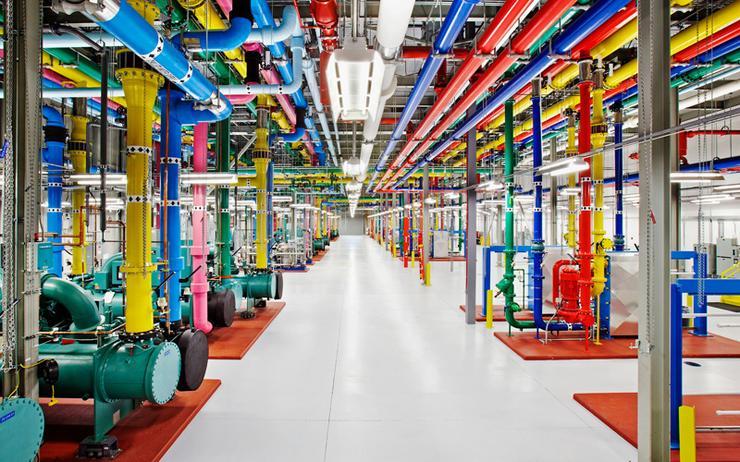 Credit: Google Cloud
Credit: Google Cloud
CIOs have a significant role to play in helping enterprises report and reduce greenhouse gas emission -- and it goes way beyond switching to energy-efficient cloud computing or turning off the office PCs at night.
That’s the message coming out of recent customer events put on by software and IT services vendors including Google Cloud, Salesforce and SAP.
Enterprises are increasingly expected -- by their customers and, in some cases, by government -- to report on their greenhouse gas emissions, typically by following standard measurement methodologies such as the Greenhouse Gas Protocol.
“With growing requirements for ESG [environmental, social, and governance] reporting, companies are looking for ways to show their employees, their boards, and customers their progress against climate targets,” says Jenn Bennett, a technical director leading data and technology strategy for sustainability in Google Cloud’s office of the CTO.
Broadening the scope
Enterprises control some greenhouse gas emissions directly: the so-called Scope 1 emissions from owned or controlled sources such as the fuel they burn to heat offices or to power company vehicles. Organisations have been tracking that data in their ERP systems for a decade or more.
Scope 2 emissions, from purchased electricity, heat, and steam, are relatively easy to calculate as utilities typically report their average emissions per kilowatt-hour (kWh) produced. These emissions may even figure as a line on your office or data center electricity bill.
The challenge for many is in extending reporting capabilities to encompass Scope 3 emissions -- everything else, including purchased goods and services, sold products, transportation and distribution, waste disposal, employee commuting, and business travel. Remember that?
Few businesses have taken on the challenge of reporting comprehensive emissions data: To do so requires a lot of data from suppliers, and the ability to connect it with goods and services purchased.
The availability of specialised sustainability reporting software tools, or modules in ERP systems, that can do just that is making full emissions reporting a more realistic proposition, so while the “why” of reporting may still be driven by the board or a governance committee, the “how” and the “when” are very much questions for the CIO to answer.
Reporting gross emissions has net benefits
Google Cloud Platform (GCP) is adding carbon footprint reporting to its cloud console, enabling customers to monitor their gross cloud carbon emissions by project, product, or region, says Google Cloud’s Bennett. It’s also offering customers tools to help move workloads to regions with low-carbon data centers, a location criterion that may become as important as compliance with data protection laws.
In reporting gross carbon emissions in the console, Google Cloud is providing important transparency, and highlighting how important fine-grained and real-time data can be in ensuring that emissions reporting does the job.
Google Cloud has been carbon neutral since 2007, meaning its data centres still consume carbon-emitting electricity but that it purchases carbon offsets to compensate for those emissions.
Since 2017 it has been “100 per cent renewable,” purchasing enough renewable energy to match its annual electricity usage -- although if the sun wasn’t shining and the wind not blowing when and where it needed power, the actual electricity it used may have been from coal-fired power stations, so there’s still room for improvement.
That’s why, says Bennett, Google Cloud is working to fully decarbonise its cloud operations on a 24-7 basis by 2030, sourcing clean energy for every location and every hour of operation.
Through its cloud console, Google Cloud is providing its customers with the level data they need to do that too -- and making it easier for them to import the data into their own reporting systems.
“To help our customers account for emissions beyond our cloud and across their organisation, we’re also partnering with Salesforce Sustainability Cloud, integrating our Google Cloud emissions data into their carbon accounting platform,” says Bennett.
Google has one other piece of sustainability news: the opening up of its Google Earth Engine satellite data platform to GCP users, allowing them to use its AI tools and BigQuery to analyse satellite imagery in conjunction with other sources of data such as water availability or weather risks.
Other sustainability reporting software
Salesforce.com announced its sustainability play a month earlier, at Dreamforce 2021, saying it too was using “100 per cent renewable” electricity (averaged across the year) and had reached net zero emissions across its entire value chain (including Scope 3).
It got there using its own Sustainability Cloud software, which reduced the time required for annual reporting from six months to six weeks, according to the company.
At the event it unveiled its Sustainability Cloud 2.0, adding new Slack-based tools for gathering Scope 3 emissions data from suppliers, new forecasting and scenario planning tools for managing the effects on business of climate change, and announcing plans to build an online exchange for carbon credits.
SAP is positioning itself as a nexus for gathering and processing greenhouse gas emissions data. By leveraging tools such as its Ariba procurement network it can facilitate the exchange of information about the carbon cost, as well as the dollar cost, of goods and services, and the ERP systems used by its customers already hold much of the information about what they are spending, who with, and when necessary for calculating greenhouse gas emissions.
Last year, it announced SAP Product Carbon Footprint Analytics to provide insight into the impact of specific products, and in September 2021 released SAP Product Footprint Management, which provides additional management tools and integration into business processes.




